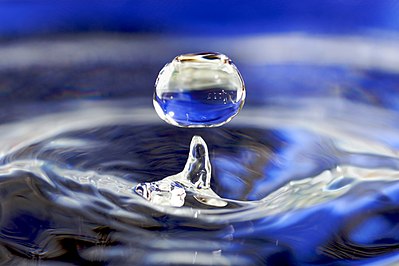When a liquid drop impacts the surface of a liquid reservoir it can float, bounce, coalesce with the reservoir, or splash. A floating drop remains on the surface for several seconds. Drop bouncing can occur on perturbed liquid surfaces. If the drop is able to rupture the thin film of gas which separates it from the liquid reservoir, it can coalesce. Additionally, higher Weber number drop impacts produce splashing. In the splashing regime, the impacting drop creates a crater in the fluid surface, followed by a crown around the crater. Finally, a central jet, called the "Rayleigh jet" or "Worthington jet", protrudes from the center of the crater. If the impact energy is high enough, the jet rises to the point where it pinches off, sending one or more droplets upward out of the surface.Photograph: José Manuel Suárez
